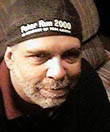|
|
 
|
|
Author
|
Topic: Feedback on a restoration...
|
|
|
Leo Enticknap
Film God

Posts: 7474
From: Loma Linda, CA
Registered: Jul 2000
|
 posted 07-23-2001 02:38 AM
posted 07-23-2001 02:38 AM





The original owner might not hold the negative for it, but he or she almost certainly does still hold the copyright (although I must admit that my knowledge of US copyright law is sketchy to say the least). Were you to attempt to commercially exploit this film (yes, even something as minor as an intermission clock) and he or she found out about it, you could be in trouble to say the least.In this country although under the 1911 copyright act (the terms of which govern any film made before 1956, 'made' being defined as the date on which the negative was exposed), copyright lapses 50 years after the death of the author in the case of fiction, or 50 years from the date of production in the case of non-fiction. However, if the 'author' is a company, copyright can be maintained in perpetuity, because a corporate 'author' is not deemed to have died if it is bought out, taken into receivership or a corporate asset (e.g. the rights to a film) is sold from one company to another. The reality is that pretty much everything is owned by someone. A graphic example of this is the fact that Georges Melies' widow was notorious for threatening legal action against various archives, organisations and individuals relating to the screening of his films - many of which were produced in the late nineteenth century! Another (less pleasant) one is that Leni Riefenstahl, now in her late 90s, still ferociously protects the rights to her Nazi-era productions, so much so that a conference on her planned by an English university some years back had to be abandoned because of legal threats. Another hurdle is that the cost of restoration is not cheap, even if it's reasonably straigtforward. Recently we had deposited a locally produced sound newsreel showing celebrations for George VI's coronation in 1937 (OK, here come the comments about sad limeys...). The print runs 790 feet and consists of one 35mm b/w combined positive on Eastman type 1301 (nitrate release print) stock of 1937 manufacture. The cost of making preservation elements (a new polyester 35mm dupe neg, sound neg rerecorded from the unilateral VA original and combined viewing print) comes to £1,620 - that's well over £100 per minute of running time. If this film were in colour or a weird format then it could well have cost three times that. If this element were in less than perfect condition (e.g. scratched, shrunk, brittle or decomposed) there would have been extra costs involved in preparing it for printing, and/or printing it using specialist equipment such as an optical step printer. For a really expensive, state of the art restoration of a major feature film, the costs are staggering. According to his commentary on the laserdisc, Robert Harris' 1998 restoration of 'Vertigo' (a VistaVision to 65mm transfer needing lots of colour fade correction) cost almost $2 million - more than many independent features cost to produce from nothing!
| IP: Logged
|
|
|
|
|
|
|
|
|
|
|
|
|
|
|
|
|
|
|
|
All times are Central (GMT -6:00)
|
|
Powered by Infopop Corporation
UBB.classicTM
6.3.1.2
The Film-Tech Forums are designed for various members related to the cinema industry to express their opinions, viewpoints and testimonials on various products, services and events based upon speculation, personal knowledge and factual information through use, therefore all views represented here allow no liability upon the publishers of this web site and the owners of said views assume no liability for any ill will resulting from these postings. The posts made here are for educational as well as entertainment purposes and as such anyone viewing this portion of the website must accept these views as statements of the author of that opinion
and agrees to release the authors from any and all liability.
|

 Home
Home
 Products
Products
 Store
Store
 Forum
Forum
 Warehouse
Warehouse
 Contact Us
Contact Us




 Printer-friendly view of this topic
Printer-friendly view of this topic















